

Enjoy the following history, legends, stories
and traditions
of Christmas, Hanukah, Kwanzaa and Ramadan.
(you can send free Christmas, Hanukah, Kwanzaa and Ramadan
E-Cards from our site (links on home page)
or visit our Holiday Section to purchase Paper Cards )
![]()
CHRISTMAS
![]()
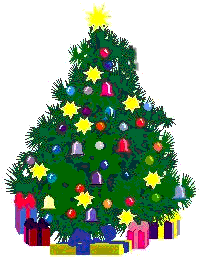 THE HISTORY OF THE CHRISTMAS TREE
THE HISTORY OF THE CHRISTMAS TREE
CHRISTMAS TREE TRADITION HAS ANCIENT ORIGINS
King Tut never saw a Christmas tree, but he would have understood the tradition which traces back long before the first Christmas, says David Robson, Extension Educator, Horticulture with the Springfield Extension Center.
The Egyptians were part of a long line of cultures that treasured and worshipped evergreens. When the winter solstice arrive, they brought green date palm leaves into their homes to symbolize life's triumph over death.
The Romans celebrated the winter solstice with a fest called Saturnalia in honor of Saturnus, the god of agriculture. They decorated their houses with greens and lights and exchanged gifts. They gave coins for prosperity, pastries for happiness, and lamps to light one's journey through life.
Centuries ago in Great Britain, woods priests called Druids used evergreens during mysterious winter solstice rituals. The Druids used holly and mistletoe as symbols of eternal life, and place evergreen branches over doors to keep away evil spirits.
Late in the Middle Ages, Germans and Scandinavians placed evergreen trees inside their homes or just outside their doors to show their hope in the forthcoming spring. Our modern Christmas tree evolved from these early traditions.
Legend has it that Martin Luther began the tradition of decorating trees to celebrate Christmas. One crisp Christmas Eve, about the year 1500, he was walking through snow-covered woods and was struck by the beauty of a group of small evergreens. Their branches, dusted with snow, shimmered in the moonlight. When he got home, he set up a little fir tree indoors so he could share this story with his children. He decorated it with candles, which he lighted in honor of Christ's birth.
The Christmas tree tradition most likely came to the United States with Hessian troops during the American Revolution, or with German immigrants to Pennsylvania and Ohio, adds Robson.
But the custom spread slowly. The Puritans banned Christmas in New England. Even as late as 1851, a Cleveland minister nearly lost his job because he allowed a tree in his church. Schools in Boston stayed open on Christmas Day through 1870, and sometimes expelled students who stayed home.
The Christmas tree market was born in 1851 when Catskill farmer Mark Carr hauled two ox sleds of evergreens into New York City and sold them all. By 1900, one in five American families had a Christmas tree, and 20 years later, the custom was nearly universal.
Christmas tree farms sprang up during the depression. Nurserymen couldn't sell their evergreens for landscaping, so they cut them for Christmas trees. Cultivated trees were preferred because they have a more symmetrical shape then wild ones.
Six species account for about 90 percent of the nation's Christmas tree trade. Scotch pine ranks first, comprising about 40 percent of the market, followed by Douglas fir which accounts for about 35 percent. The other big sellers are noble fir, white pine, balsam fir and white spruce.
by: David Robson Extension Educator, Horticulture Springfield Extension Center
![]()
 THE HISTORY OF CHRISTMAS TREE ORNAMENTS
THE HISTORY OF CHRISTMAS TREE ORNAMENTS
It is from Germany that we today get many of our customs, songs, images of Santa, pine trees and European hand blow glass ornaments.
How these traditions traveled to England is interesting. Queen Victoria often visited relatives in Germany in the town of Coburg and while there she fell in love with a young Prince Albert. After they got married they returned to England to raise their family.
The tree that Price Albert provided his family was admired by all in England. This tree was decorated in the finest of hand blown glass ornaments. Since everyone liked the Queen they copied her Christmas customs including the Christmas tree and ornaments.
A F.W. Woolworth brought the glass ornament tradition to the United States in 1890. From 1870's to 1930's, Germans made the finest molds for making ornaments with nearly 5,000 different molds at the time. At the turn of the century there were over one hundred small cottage glass blowing workshops in Europe.
During the hay day of turn of the century ornament making, almost all
ornaments were made in Lauscha, a small town nested in the Thuringian mountains.
After the war, however, glass ornament production declined. Many of the
craftsmen left for West Germany. Quantity rather than quality, was the Communist
management philosophy. Some old molds fell into disrepair and many others were
left to collect dust or were lost.
In the 1960's it was fashionable to have an Aluminum tree and all the same shape
and color ornaments. Many threw away the old ornaments from Germany.
![]()
 The Legend of The
Christmas Spider
The Legend of The
Christmas Spider
Once upon a time in Germany, long ago, a gentle mother was busily cleaning the house for the most wonderful day of the year. Not a speck of dust was left on the day when the Christ Child was to come and bring the gifts of Christmas Eve. Even the spiders had been banished from their cozy corner in the ceiling to avoid the housewife's busy cleaning. They finally fled to the farthest corner of the forgotten attic.
'Twas Christmas Eve at last! The tree was decorated and waiting for the children to see it. But the poor spiders were frantic, for they could not see the tree, nor be present for the Christ Child's visit. The oldest and wisest spider suggested that perhaps they could peep through the crack in the door to see Him. Silently, they crept out of their attic and across the floor to wait in the crack in the threshold.
Suddenly, the door opened a wee bit, and quickly the spiders sneaked into the room. The tree towered so high they couldn't see the ornaments on top. In fact, their eyes were so small they could see only one ornament at a time. They scurried up the trunk, out along each branch, filled with a happy wonder at the glittering beauty. Every place they went they left a trail of dusty, grey web. When at last they had inspected every bit of the Christmas tree, it was shrouded in a dusty grey of spider webs.
The Christ Child smiled as He thought of the happy spiders seeing His tree. But He knew the mother would not feel the same way and that she would be broken hearted. So He reached out His hand and touched the webs and blessed them. They all turned to shimmering, sparkling silver and gold. The tree glistened in greater beauty than ever before.
Ever since that time, we have hung tinsel on the tree, and according to the story, it has become a custom to include a spider among the decorations on the tree.
![]()
Saint Boniface, an English missionary, known as the "Apostle of Germany", in 722 came upon some men about to cut a huge oak tree as a stake (Oak of Thor) for a human sacrifice to their pagan god. With one mighty blow, Saint Boniface felled the massive oak and as the tree split, a beautiful young fir tree sprang from its center. Saint Boniface told the people that this lovely evergreen, with its branches pointing to heaven, was indeed a holy tree, the tree of the Christ Child, a symbol of His promise of eternal life. He instructed them henceforth to carry the evergreen from the wilderness into their homes and to surround it with gifts, symbols of love and kindness.
Saint Boniface (feast June 5) received the name Winfrid at his baptism but took the name Boniface before he was ordained to the priesthood. He was martyred at the age of 75.
![]()
There is a very old and charming European custom of decorating a fir tree with apples and small white wafers representing the Holy Eucharist. These wafers were later replaced by little pieces of pastry cut in the shapes of stars, angels, hearts, flowers, and bells. Eventually other cookies were introduced bearing the shapes of men, birds, roosters and other animals.
In the Middle Ages, about the 11th century, religious theater was born. One of the most popular plays, the German mystery play, concerned Adam and Eve, their fall and expulsion from the Garden of Eden--from the Early Paradise. The Garden of Eden was represented by a fir tree hung with apples. It represented both the Tree of Life and the Tree of Discernment of Good and Evil which stood in the center of Paradise. The play ended with the prophecy of a coming Savior, and for this reason, this particular play was often enacted during Advent.
The one piece of scenery--the "Paradeisbaum (the Paradise Tree) became a popular object, and was often set up in churches, and eventually in private homes as well. It became a symbol of the Savior. Since the tree represented not only Paradise, and man's fall, but also the promise of salvation, it was hung not merely with apples, but also with bread or wafers (Holy Eucharist) and often sweets (representing the sweetness of redemption). In sections of Bavaria, fir branches and little trees, decorated with lights, apples and tinsel are still called Paradeis.
The German and English immigrants brought the Christmas tree to America. Fruits, nuts, flowers, and lighted candles adorned the first Christmas trees, but only the strongest trees could support the weight without drooping; thus, German glassblowers began producing lightweight glass balls to replace heavier, natural decorations. These lights and decorations were symbols of the joy and light of Christmas. The star that tops the tree is symbolic of the "Star in the East".
![]()
This story tells us that when Christianity first came to Northern Europe, three personages representing virtues were sent from Heaven to place lights on the original Christmas Tree. They were Faith, Hope and Charity. Their search was long for they were required to find a tree that was as high as hope; as great as love; as sweet as charity; and one that had the sign of the cross on every bough. Their search ended in the forests of the North for there they found the Fir. They lighted it from the radiance of the stars and it became the first Christmas tree.
![]()
When the Holy family was pursued by Herod's soldiers, many plants offered them shelter. One such plant was the Pine Tree. When Mary was too weary to travel longer the family stopped at the edge of a forest to rest. A gnarled old pine which had grown hollow with its' years invited them to rest within its trunk--then it closed its branches down and kept them safe until the soldiers had passed. Upon leaving, the Christ Child blessed the pine and the imprint of his little hand was left forever in the tree's fruit--the pine cone. If a cone is cut lengthwise the hand may still be seen.
![]()
The Christmas card is a Victorian creation, which began as a kind of stationery. The first card was produced by Sir Henry Cole who worked for the British Postal Service, and an artist he hired named John Calcott Horsley. This early card was a depiction of a Christmas scene framed in three panels. In the center panel was a homey table scene: children, parents and grandparents seated and some raising their glasses for a toast. On either side were panels depicting acts of Christmas charity: to the left, feeding the hungry; to the right, clothing the naked. Underneath appears the now familiar phrase "A Merry Christmas and a Happy New Year to You." Actually cards were preceded by "Christmas Pieces" written by school boys in England as greetings to their parents and as proof of their progress in the art of writing. (Visit our Greeting Card Museum for much more information on the History of the Christmas Card as well as some beautiful examples of Christmas Cards of the past.)
![]()
The Advent Wreath is a Lutheran custom that originated in Eastern Germany. They are round as a symbol of God's eternity and mercy, of which every season of Advent is a new reminder; and it is made of evergreens to symbolize God's "everlastingness" and our immortality. Green is also the Church's color of hope and new life. Four candles, three purple or violet that represent penance, sorrow, and longing expectation and one rose or pink that represents the hope and coming joy are placed within to represent the four weeks of Advent. They are replaced with white candles for the Christmas season which ends with Epiphany. Wreaths are an ancient symbol of victory and symbolize the "fulfillment of time" in the coming of Christ and the glory of His birth.
In old German tradition, on the first Sunday of Advent, the children write their Christmas letter to the Christ child, Christkindl, who accompanied by His angels, will bring the Christmas tree and all the good things on it and under it. In Denmark, the Christmas season begins on December 1, with the lighting of the calendar candle. The candle is marked with 24 lines, one for each day before Christmas; the burning of the candle represents the waiting and preparing for Christ's coming.
There are many ways to create an Advent Wreath...some advice on creating your own Advent Wreath will appear in Fridge Art in the second week of Advent - still not too late to start.
by Shonnie Scarola
![]()

THE NIGHT BEFORE
CHRISTMAS
by Clement Clarke Moore
'Twas the night before Christmas, when all
through the house
Not a creature was stirring, not even a mouse;
The
stockings were hung by the chimney with care,
In hopes that St. Nicholas soon
would be there;
The children were nestled all snug in their beds,
While
visions of sugar-plums danced in their heads;
And mamma in her 'kerchief, and
I in my cap,
Had just settled down for a long winter's nap,
When out on
the lawn there arose such a clatter,
I sprang from the bed to see what was
the matter.
Away to the window I flew like a flash,
Tore open the
shutters and threw up the sash.
The moon on the breast of the new-fallen
snow
Gave the lustre of mid-day to objects below,
When, what to my
wondering eyes should appear,
But a miniature sleigh, and eight tiny
reindeer,
With a little old driver, so lively and quick,
I knew in a
moment it must be St. Nick.
More rapid than eagles his coursers they
came,
And he whistled, and shouted, and called them by name;
"Now,
Dasher! Now, Dancer! Now, Prancer and Vixen!
On, Comet! On Cupid! On, Donder
and Blitzen!
To the top of the porch! to the top of the wall!
Now dash
away! dash away! dash away all!"
As dry leaves that before the wild
hurricane fly,
When they meet with an obstacle, mount to the sky,
So up to
the house-top the coursers they flew,
With the sleigh full of toys, and St.
Nicholas too.
And then, in a twinkling, I heard on the roof
The
prancing and pawing of each little hoof.
As I drew in my hand, and was
turning around,
Down the chimney St. Nicholas came with a bound.
He was
dressed all in fur, from his head to his foot,
And his clothes were all
tarnished with ashes and soot;
A bundle of toys he had flung on his
back,
And he looked like a peddler just opening his pack.
His eyes --
how they twinkled! his dimples how merry!
His cheeks were like roses, his
nose like a cherry!
His droll little mouth was drawn up like a bow,
And
the beard of his chin was as white as the snow;
The stump of a pipe he held
tight in his teeth,
And the smoke it encircled his head like a wreath;
He
had a broad face and a little round belly,
That shook, when he laughed like a
bowlful of jelly.
He was chubby and plump, a right jolly old elf,
And I
laughed when I saw him, in spite of myself;
A wink of his eye and a twist of
his head,
Soon gave me to know I had nothing to dread;
He spoke not a
word, but went straight to his work,
And filled all the stockings; then
turned with a jerk,
And laying his finger aside of his nose,
And giving a
nod, up the chimney he rose;
He sprang to his sleigh, to his team gave a
whistle,
And away they all flew like the down of a thistle.
But I heard
him exclaim, ere he drove out of sight,
"Happy Christmas to all, and to all a
good-night."
![]()
One dollar and eighty-seven cents. That was all. And sixty cents of it was in pennies. Pennies saved one and two at a time by bulldozing the grocer and the vegetable man and the butcher until one's cheeks burned with the silent imputation of parsimony that such close dealing implied. Three times Della counted it. One dollar and eighty-seven cents. And the next day would be Christmas.
There was clearly nothing to do but flop down on the shabby little couch and howl. So Della did it. Which instigates the moral reflection that life is made up of sobs, sniffles, and smiles, with sniffles predominating.
While the mistress of the home is gradually subsiding from the first stage to the second, take a look at the home. A furnished flat at $8 per week. It did not exactly beggar description, but it certainly had that word on the lookout for the mendicancy squad.
In the vestibule below was a letter-box into which no letter would go, and an electric button from which no mortal finger could coax a ring. Also appertaining thereunto was a card bearing the name "Mr. James Dillingham Young."
The "Dillingham" had been flung to the breeze during a former period of prosperity when its possessor was being paid $30 per week. Now, when the income was shrunk to $20, though, they were thinking seriously of contracting to a modest and unassuming D. But whenever Mr. James Dillingham Young came home and reached his flat above he was called "Jim" and greatly hugged by Mrs. James Dillingham Young, already introduced to you as Della. Which is all very good.
Della finished her cry and attended to her cheeks with the powder rag. She stood by the window and looked out dully at a gray cat walking a gray fence in a gray backyard. Tomorrow would be Christmas Day, and she had only $1.87 with which to buy Jim a present. She had been saving every penny she could for months, with this result. Twenty dollars a week doesn't go far. Expenses had been greater than she had calculated. They always are. Only $1.87 to buy a present for Jim. Her Jim. Many a happy hour she had spent planning for something nice for him. Something fine and rare and sterling--something just a little bit near to being worthy of the honor of being owned by Jim.
There was a pier-glass between the windows of the room. Perhaps you have seen a pier-glass in an $8 flat. A very thin and very agile person may, by observing his reflection in a rapid sequence of longitudinal strips, obtain a fairly accurate conception of his looks. Della, being slender, had mastered the art.
Suddenly she whirled from the window and stood before the glass. her eyes were shining brilliantly, but her face had lost its color within twenty seconds. Rapidly she pulled down her hair and let it fall to its full length.
Now, there were two possessions of the James Dillingham Youngs in which they both took a mighty pride. One was Jim's gold watch that had been his father's and his grandfather's. The other was Della's hair. Had the queen of Sheba lived in the flat across the airshaft, Della would have let her hair hang out the window some day to dry just to depreciate Her Majesty's jewels and gifts. Had King Solomon been the janitor, with all his treasures piled up in the basement, Jim would have pulled out his watch every time he passed, just to see him pluck at his beard from envy.
So now Della's beautiful hair fell about her rippling and shining like a cascade of brown waters. It reached below her knee and made itself almost a garment for her. And then she did it up again nervously and quickly. Once she faltered for a minute and stood still while a tear or two splashed on the worn red carpet.
On went her old brown jacket; on went her old brown hat. With a whirl of skirts and with the brilliant sparkle still in her eyes, she fluttered out the door and down the stairs to the street.
Where she stopped the sign read: "Mne. Sofronie. Hair Goods of All Kinds." One flight up Della ran, and collected herself, panting. Madame, large, too white, chilly, hardly looked the "Sofronie."
"Will you buy my hair?" asked Della.
"I buy hair," said Madame. "Take yer hat off and let's have a sight at the looks of it."
Down rippled the brown cascade.
"Twenty dollars," said Madame, lifting the mass with a practiced hand.
"Give it to me quick," said Della.
Oh, and the next two hours tripped by on rosy wings. Forget the hashed metaphor. She was ransacking the stores for Jim's present.
She found it at last. It surely had been made for Jim and no one else. There was no other like it in any of the stores, and she had turned all of them inside out. It was a platinum fob chain simple and chaste in design, properly proclaiming its value by substance alone and not by >meretricious ornamentation--as all good things should do. It was even worthy of The Watch. As soon as she saw it she knew that it must be Jim's. It was like him. Quietness and value--the description applied to both. Twenty-one dollars they took from her for it, and she hurried home with the 87 cents. With that chain on his watch Jim might be properly anxious about the time in any company. Grand as the watch was, he sometimes looked at it on the sly on account of the old leather strap that he used in place of a chain.
When Della reached home her intoxication gave way a little to prudence and reason. She got out her curling irons and lighted the gas and went to work repairing the ravages made by generosity added to love. Which is always a tremendous task, dear friends--a mammoth task.
Within forty minutes her head was covered with tiny, close-lying curls that made her look wonderfully like a truant schoolboy. She looked at her reflection in the mirror long, carefully, and critically.
"If Jim doesn't kill me," she said to herself, "before he takes a second look at me, he'll say I look like a Coney Island chorus girl. But what could I do--oh! what could I do with a dollar and eighty- seven cents?"
At 7 o'clock the coffee was made and the frying-pan was on the back of the stove hot and ready to cook the chops.
Jim was never late. Della doubled the fob chain in her hand and sat on the corner of the table near the door that he always entered. Then she heard his step on the stair away down on the first flight, and she turned white for just a moment. She had a habit for saying little silent prayer about the simplest everyday things, and now she whispered: "Please God, make him think I am still pretty."
The door opened and Jim stepped in and closed it. He looked thin and very serious. Poor fellow, he was only twenty-two--and to be burdened with a family! He needed a new overcoat and he was without gloves.
Jim stopped inside the door, as immovable as a setter at the scent of quail. His eyes were fixed upon Della, and there was an expression in them that she could not read, and it terrified her. It was not anger, nor surprise, nor disapproval, nor horror, nor any of the sentiments that she had been prepared for. He simply stared at her fixedly with that peculiar expression on his face.
Della wriggled off the table and went for him.
"Jim, darling," she cried, "don't look at me that way. I had my hair cut off and sold because I couldn't have lived through Christmas without giving you a present. It'll grow out again--you won't mind, will you? I just had to do it. My hair grows awfully fast. Say `Merry Christmas!' Jim, and let's be happy. You don't know what a nice-- what a beautiful, nice gift I've got for you."
"You've cut off your hair?" asked Jim, laboriously, as if he had not arrived at that patent fact yet even after the hardest mental labor.
"Cut it off and sold it," said Della. "Don't you like me just as well, anyhow? I'm me without my hair, ain't I?"
Jim looked about the room curiously.
"You say your hair is gone?" he said, with an air almost of idiocy.
"You needn't look for it," said Della. "It's sold, I tell you--sold and gone, too. It's Christmas Eve, boy. Be good to me, for it went for you. Maybe the hairs of my head were numbered," she went on with sudden serious sweetness, "but nobody could ever count my love for you. Shall I put the chops on, Jim?"
Out of his trance Jim seemed quickly to wake. He enfolded his Della. For ten seconds let us regard with discreet scrutiny some inconsequential object in the other direction. Eight dollars a week or a million a year--what is the difference? A mathematician or a wit would give you the wrong answer. The magi brought valuable gifts, but that was not among them. This dark assertion will be illuminated later on.
Jim drew a package from his overcoat pocket and threw it upon the table.
"Don't make any mistake, Dell," he said, "about me. I don't think there's anything in the way of a haircut or a shave or a shampoo that could make me like my girl any less. But if you'll unwrap that package you may see why you had me going a while at first."
White fingers and nimble tore at the string and paper. And then an ecstatic scream of joy; and then, alas! a quick feminine change to hysterical tears and wails, necessitating the immediate employment of all the comforting powers of the lord of the flat.
For there lay The Combs--the set of combs, side and back, that Della had worshipped long in a Broadway window. Beautiful combs, pure tortoise shell, with jeweled rims--just the shade to wear in the beautiful vanished hair. They were expensive combs, she knew, and her heart had simply craved and yearned over them without the least hope of possession. And now, they were hers, but the tresses that should have adorned the coveted adornments were gone.
But she hugged them to her bosom, and at length she was able to look up with dim eyes and a smile and say: "My hair grows so fast, Jim!"
And them Della leaped up like a little singed cat and cried, "Oh, oh!"
Jim had not yet seen his beautiful present. She held it out to him eagerly upon her open palm. The dull precious metal seemed to flash with a reflection of her bright and ardent spirit.
"Isn't it a dandy, Jim? I hunted all over town to find it. You'll have to look at the time a hundred times a day now. Give me your watch. I want to see how it looks on it."
Instead of obeying, Jim tumbled down on the couch and put his hands under the back of his head and smiled.
"Dell," said he, "let's put our Christmas presents away and keep 'em a while. They're too nice to use just at present. I sold the watch to get the money to buy your combs. And now suppose you put the chops on."
The magi, as you know, were wise men--wonderfully wise men--who brought gifts
to the Babe in the manger. They invented the art of giving Christmas presents.
Being wise, their gifts were no doubt wise ones, possibly bearing the privilege
of exchange in case of duplication. And here I have lamely related to you the
uneventful chronicle of two foolish children in a flat who most unwisely
sacrificed for each other the greatest treasures of their house. But in a last
word to the wise of these days let it be said that of all who give gifts these
two were the wisest. O all who give and receive gifts, such as they are wisest.
Everywhere they are wisest. They are the magi.
![]()
The Date of Christmas
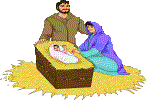 The
idea to celebrate Christmas on December 25 originated in the 4th century. The
Catholic Church wanted to eclipse the festivities of a rival pagan religion that
threatened Christianity's existence. The Romans celebrated the birthday of their
sun god, Mithras during this time of year. Although it was not popular, or even
proper, to celebrate people's birthdays in those times, church leaders decided
that in order to compete with the pagan celebration they would themselves order
a festival in celebration of the birth of Jesus Christ. Although the actual
season of Jesus' birth is thought to be in the spring, the date of December 25
was chosen as the official birthday celebration as Christ's Mass so that it
would compete head on with the rival pagan celebration. Christmas was slow to
catch on in America. The early colonists considered it a pagan ritual. The
celebration of Christmas was even banned by law in Massachusetts in colonial
days.
The
idea to celebrate Christmas on December 25 originated in the 4th century. The
Catholic Church wanted to eclipse the festivities of a rival pagan religion that
threatened Christianity's existence. The Romans celebrated the birthday of their
sun god, Mithras during this time of year. Although it was not popular, or even
proper, to celebrate people's birthdays in those times, church leaders decided
that in order to compete with the pagan celebration they would themselves order
a festival in celebration of the birth of Jesus Christ. Although the actual
season of Jesus' birth is thought to be in the spring, the date of December 25
was chosen as the official birthday celebration as Christ's Mass so that it
would compete head on with the rival pagan celebration. Christmas was slow to
catch on in America. The early colonists considered it a pagan ritual. The
celebration of Christmas was even banned by law in Massachusetts in colonial
days.

Two hundred years before the
birth of Christ, the Druids used mistletoe to celebrate the coming of winter.
They would gather this evergreen plant that is parasitic upon other trees and
used it to decorate their homes. They believed the plant had special healing
powers for everything from female infertility to poison ingestion. Scandinavians
also thought of mistletoe as a plant of peace and harmony. They associated
mistletoe with their goddess of love, Frigga. The custom of kissing under the
mistletoe probably derived from this belief. The early church banned the use of
mistletoe in Christmas celebrations because of its pagan origins. Instead,
church fathers suggested the use of holly as an appropriate substitute for
Christmas greenery.
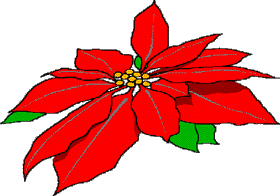
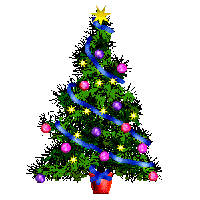 The
Christmas Tree
The
Christmas Tree
The Christmas Tree originated in Germany in the 16th century. It was
common for the Germanic people to decorate fir trees, both inside and out, with
roses, apples, and colored paper. It is believed that Martin Luther, the
Protestant reformer, was the first to light a Christmas tree with candles. While
coming home one dark winter's night near Christmas, he was struck with the
beauty of the starlight shining through the branches of a small fir tree outside
his home. He duplicated the starlight by using candles attached to the branches
of his indoor Christmas tree. The Christmas tree was not widely used in Britain
until the 19th century. It was brought to America by the Pennsylvania Germans in
the 1820's.
Xmas
This abbreviation for Christmas is of Greek origin. The word for Christ
in Greek is Xristos. During the 16th century, Europeans began using the first
initial of Christ's name, "X" in place of the word Christ in Christmas
as a shorthand form of the word. Although the early Christians understood that X
stood for Christ's name, later Christians who did not understand the Greek
language mistook "Xmas" as a sign of disrespect. ~ The
Greek letter "X" is the equivalent of CH and is also a symbol of
Christ which explains the spelling "XMAS".
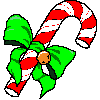
In the late 1800's a candy maker in Indiana wanted to express the meaning
of Christmas through a symbol made of candy. He came up with the idea of bending
one of his white candy sticks into the shape of a Candy Cane. He incorporated
several symbols of Christ's love and sacrifice through the Candy Cane. First, he
used a plain white peppermint stick. The color white symbolizes the purity and
sinless nature of Jesus. Next, he added three small stripes to symbolize the
pain inflicted upon Jesus before His death on the cross. There are three of them
to represent the Holy Trinity. He added a bold stripe to represent the blood
Jesus shed for mankind. When looked at with the crook on top, it looks like a
shepherd's staff because Jesus is the shepherd of man. If you turn it upside
down, it becomes the letter J symbolizing the first letter in Jesus' name. The
candy maker made these candy canes for Christmas, so everyone would remember
what Christmas is all about.
Santa
Claus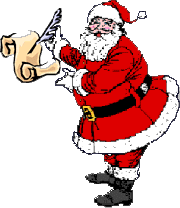
The original Santa Claus, St. Nicholas, was born in Turkey in the 4th
century. He was very
pious from an early age, devoting his life to Christianity.
He became widely known for his generosity for the poor. But the Romans held him
in contempt. He was imprisoned and tortured. But when Constantine became emperor
of Rome, he allowed Nicholas to go free. Constantine became a Christian and
convened the Council of Nicaea in 325. Nicholas was a delegate to the council.
He is especially noted for his love of children and for his generosity. He is
the patron saint of sailors, Sicily, Greece, and Russia. He is also, of course,
the patron saint of children. The Dutch kept the legend of St. Nicholas alive.
In 16th century Holland, Dutch children would place their wooden shoes by the
hearth in hopes that they would be filled with a treat. The Dutch spelled St.
Nicholas as Sint Nikolaas, which became corrupted to Sinterklaas, and finally,
in Anglican, to Santa Claus. In 1822, Clement C. Moore composed his famous poem,
"A Visit from St. Nick," which was later published as "The Night
Before Christmas." Moore is credited with creating the modern image of
Santa Claus as a jolly fat man in a red suit.
Courtesy Wilstar
![]()
CHANUKAH
![]()
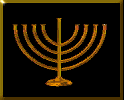 THE CELEBRATION OF
Chanukah
THE CELEBRATION OF
Chanukah
Every year between the end of November and the end of December, Jewish people around the world celebrate the holiday of Chanukah, the Festival of Lights. Chanukah begins on the 25th day of the Hebrew month of Kislev, but the starting date on the western calendar varies from year to year. The holiday celebrates the events which took place over 2,300 years ago in the land of Judea, which is now Israel.
Long ago in the land of Judea there was a Syrian king, Antiochus. The king ordered the Jewish people to reject their G-d, their religion, their customs and their beliefs and to worship the Greek gods. There were some who did as they were told, but many refused. One who refused was Judah Maccabee.
Judah and his four brothers formed an army and chose as their name the word "Maccabee", which means hammer. After three years of fighting, the Maccabees were finally successful in driving the Syrians out of Israel and reclaimed the Temple in Jerusalem. The Maccabees wanted to clean the building and to remove the hated Greek symbols and statues. On the 25th day of the month of Kislev, the job was finished and the temple was rededicated.
When Judah and his followers finished cleaning the temple, they wanted to light the eternal light, known as the N'er Tamid, which is present in every Jewish house of worship. Once lit, the oil lamp should never be extinguished.
Only a tiny jug of oil was found with only enough for a single day. The oil lamp was filled and lit. Then a miracle occurred as the tiny amount of oil stayed lit not for one day, but for eight days.
Jews celebrate Chanukah to mark the victory over the Syrians and the rededication of the Jerusalem Temple. The Festival of the Lights, Chanukah, lasts for eight days to commemorate the miracle of the oil. The word Chanukah means "rededication".
In America, families celebrate Chanukah at home. They give and receive gifts, decorate the house, entertain friends and family, eat special foods, and light the holiday menorah.
Hanukah is the story of a great victory of the Jews over the Syrian-Greeks. In 165 BCE, led by the Hasmonean family of Mattathias the High Priest and his youngest son, Judah, the Jews succeeded in evicting the Syrian-Greeks from Israel and restored the Temple.
According to the Talmud, after the Temple had been cleaned and the Priests were ready to light the Temple menorah, they could find only one jug of oil that was fit to use. This was only enough for one day, but it lasted for eight. This is why Hanukah is eight days long. For eight days beginning on the twenty-fifth day of the month of Kislev we light the menorah to celebrate the victory and the miracle of Hanukah.
Hanukah comes from the Hebrew word "Khanu" meaning 'and they
rested,' and from the Hebrew date Kaf Hey which equals 25. That is why we
celebrate Hanukah beginning on the 25th of the month of Kislev.
![]()
Miracle of the Oil
Why is it important that the oil lasted eight days?
In the temple, a menorah was lit every day. The oil used in the menorah was the purest olive oil. The rabbis say the oil was so pure, only the first drop of oil from each olive could be used. Because of the need for strict purity of the oil, it took seven days to make a single batch of oil.
The small jar of oil that had not been disturbed lasted for the one day it was expected to last and continued for the full week it took to make new oil.
![]()
Hannah and Her Seven Sons
Hanukah is the story of heroes and bravery. It took great courage to go against the king and not worship idols. It took courage to fight against a powerful enemy and win as the Maccabees did.
One of the most amazing parts of Hanukah is in the Book of the Maccabees. It is the story of Hannah and her sons. She loved them very much and they were loyal to HaShem. They would not do what the king wanted them to do and worship idols.
One day the soldiers came and took Hannah and her sons away. They brought them to the church where there was an idol of Zeus and ordered them to bow down and worship and say that they accepted Zeus as their god. Hannah and her sons refused.
The soldiers killed her oldest son, hoping that when the others saw this they would worship their idol. But they did not. One after the other they were killed as was Hannah. She died declaring her faith in HaShem.
![]()
Judah Ha Maccabee
For three years Judah the Maccabee led his followers, those loyal to HaShem, against the Syrians. The Syrian Greeks had weapons, the Maccabees did not. The Jews were greatly outnumbered.
They hid in the Judean hills, and attacked whenever they could. Slowly but surely, they wore down the enemies, and retook Jerusalem and cleaned out the temple of the idols and restored it. That is the festival of rededication called Hanukah.
![]()
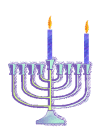 The Menorah
The Menorah
The Menorah or candle holder is a really important part of the tradition of Hanukah. It is why we call the holiday "the festival of light".
We light the menorah from the left side to the right side.
We place the candles in the menorah from the right to the left. When we light the menorah we say the blessings for the candles.There are many different styles of menorot (plural for menorah). In most cases the Shamash (the helper candle) is in the middle or to the left side. Some are made for burning oil and some for candles.
![]()
One of the best known symbols of Chanukah is the Dreidel. A dreidel is a four sided top with a Hebrew letter on each side.
The four letters are: SHIN, HEY, GIMEL and NUN
These letters mean "A Great Miracle Happened There. "In Israel the dreidel is a bit different in that their letters mean " A Miracle Happened HERE!"
Dreidel is also a popular game played during the Holiday. Players use pennies, nuts, raisins, or chocolate coins (gelt) as tokens or chips.
The player spins the dreidel. When the dreidel stops, the letter that is facing up decides the fate.
NUN - nothing happens - next player spins the dreidel
GIMEL - player takes all tokens in the pot
HEY - player takes half of the pot
SHIN - player must put one token into the pot
![]()
KWANZAA
![]()
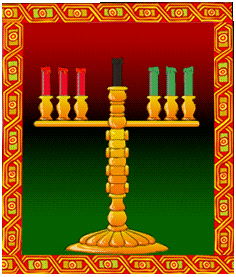 Kwanzaa is a unique African American celebration with
focus on the traditional African values of family, community responsibility,
commerce, and self-improvement. Kwanzaa is neither political nor religious and
despite some misconceptions, is not a substitute for Christmas. It is simply a
time of reaffirming African-American people, their ancestors and culture.
Kwanzaa, which means "first fruits of the harvest" in the African
language Kiswahili, has gained tremendous acceptance. Since its founding in 1966
by Dr. Maulana Karenga, Kwanzaa has come to be observed by more than18 million
people worldwide, as reported by the New York Times. When establishing Kwanzaa
in 1966, Dr. Karenga included an additional "a" to the end of the
spelling to reflect the difference between the African American celebration (kwanzaa)
and the Motherland spelling (kwanza).
Kwanzaa is a unique African American celebration with
focus on the traditional African values of family, community responsibility,
commerce, and self-improvement. Kwanzaa is neither political nor religious and
despite some misconceptions, is not a substitute for Christmas. It is simply a
time of reaffirming African-American people, their ancestors and culture.
Kwanzaa, which means "first fruits of the harvest" in the African
language Kiswahili, has gained tremendous acceptance. Since its founding in 1966
by Dr. Maulana Karenga, Kwanzaa has come to be observed by more than18 million
people worldwide, as reported by the New York Times. When establishing Kwanzaa
in 1966, Dr. Karenga included an additional "a" to the end of the
spelling to reflect the difference between the African American celebration (kwanzaa)
and the Motherland spelling (kwanza).
Kwanzaa is based on the Nguzo Saba (seven guiding principles), one for each day of the observance, and is celebrated from December 26th to January 1st.
![]()
As it is always better to get an early start, we suggest that you begin the first week in December by making a check list for the following items: A Kinara (candle holder); Mkeka (placemat preferably made of straw); Mazao (crops, i.e., fruits and vegetables); Vibunzi (ears of corn to reflect the number of children in the household); Kikombe cha umoja (communal unity cup); Mishumaa saba (seven candles, one black, three red, and three green); and Zawadi (gifts that are enriching).
It is important that the Kinara not be confused with the menorah. The Kinara holds seven candles to reflect the seven principles which are the foundation of Kwanzaa. If you don't have a Kinara and don't know where to get one, it is suggested that you use "kuumba" (creativity) and make one. A 2x4 or a piece of driftwood will do just fine, and screw-in candle holders can be purchased in most hardware stores. The Mkeka (place mat) shouldn't present a problem. While straw is suggested because it is traditional, cloth makes an adequate substitute. If cloth is used, one with an African print is preferred. The other symbols are easy to come by and warrant no further discussion other than to caution against placing the Mazao (crops) in a cornucopia which is Western. A plain straw basket or a bowl will do just fine. One last note, even households without any children should place an ear of corn on the place mat to symbolize the African concept of social parenthood. All seven symbols are creatively placed on top of the place mat, i.e., the symbols should be attractively arranged as they form the Kwanzaa centerpiece.
![]()
DECORATING THE HOME
The Kinara along with the other symbols of Kwanzaa should dominate the room, which should be given an African motif. This is easily achieved and shouldn't result in too much expense. The colors of Kwanzaa are black, red and green. This should be kept in mind when decorating the home. Black, red and green streamers, balloons, cloth, flowers, and African prints can be hung tastefully around the room. Original art and sculpture may be displayed as well.
![]()
GIFTS
Kuumba (creativity) is greatly encouraged. Not only is Kuumba one of the seven principles, it also brings a sense of personal satisfaction and puts one squarely into the spirit of Kwanzaa. Therefore, those symbols that can be made, should be made. The giving of gifts during Kwanzaa should be affordable and of an educational or artistic nature. Gifts are usually exchanged between parents and children and traditionally given on January 1st, the last day of Kwanzaa. However, gift giving during Kwanzaa may occur at any time.
![]()
THE KWANZAA FEAST OR KARAMU
The Kwanzaa Karumu is traditionally
held on December 31st (participants celebrating New Year's Eve, should plan
their Karamu early in the evening). It is a very special event as it is
the one Kwanzaa event that brings us closer to our African roots. The
Karamu is a communal and cooperative effort. Ceremonies and cultural
expressions are highly encouraged. It is important to decorate the place
where the Karamu will be held, (e.g., home, community center, church) in an
African motif that utilizes black, red, and green color scheme. A large
Kwanzaa setting should dominate the room where the karamu will take place.
A large Mkeka should be placed in the center of the floor where the food should
be placed creatively and made accessible to all for self-service. Prior to
and during the feast, an informative and entertaining program should be
presented. Traditionally, the program involved welcoming, remembering,
reassessment, recommitment and rejoicing, concluded by a farewell statement and
a call for greater unity.
![]()
RAMADAN
![]()

The Fast of Ramadan Ramadan is the ninth month of the Muslim calendar. The Month of Ramadan is also when it is believed the Holy Quran was sent down from heaven, a guidance unto men, a declaration of direction, and a means of Salvation.
It is during this month that Muslims fast. It is called the Fast of Ramadan and lasts the entire month. Ramadan is a time when Muslims concentrate on their faith and spend less time on the concerns of their everyday lives. It is a time of worship and contemplation.
During the Fast of Ramadan strict restraints are placed on the daily lives of Muslims. They are not allowed to eat or drink during the daylight hours. Smoking and sexual relations are also forbidden during fasting. At the end of the day the fast is broken with prayer and a meal called the iftar. In the evening following the iftar it is customary for Muslims to go out visiting family and friends. The fast is resumed the next morning.
According to the Holy Quran:
One may eat and drink at any time during the night "until you can plainly distinguish a white thread from a black thread by the daylight: then keep the fast until night".
The good that is acquired through the fast can be destroyed by five things:
These are considered offensive at all times, but are most offensive during the Fast of Ramadan.
During Ramadan, it is common for Muslims to go to the Masjid (Mosque) and spend several hours praying and studying the Quran. In addition to the five daily prayers, during Ramadan Muslims recite a special prayer called the Taraweeh prayer (Night Prayer). The length of this prayer is usually 2-3 times as long as the daily prayers. Some Muslims spend the entire night in prayer.
On the evening of the 27th day of the month, Muslims celebrate the Laylat-al-Qadr (the Night of Power). It is believed that on this night Muhammad first received the revelation of the Holy Quran. And according to the Quran, this is when God determines the course of the world for the following year.
When the fast ends (the first day of the month of Shawwal) it is celebrated for three days in a holiday called Id-al-Fitr (the Feast of Fast Breaking). Gifts are exchanged. Friends and family gather to pray in congregation and for large meals. In some cities fairs are held to celebrate the end of the Fast of Ramadan.
![]()

A RAMADAN POEM
THE HOLY MONTH OF RAMADAN
FOR THE SUBMITTERS HAS BEGUN
PRAISING GOD THROUGH THE DAY,
FROM DAWN TO DUSK WE FAST AND PRAY.
WE PAY ZAKAT (CHARITY) FOR THOSE IN NEED,
TRYING OUR BEST TO DO GOOD DEEDS.
WHEN THE SUN HAS SET, AND DAY IS DONE-
I'LL BREAK THIS CHAIN, BUT ONLY ONE.
BY THE END OF RAMADAN, THIS WHOLE CHAIN WILL
BE ALL GONE!
IT'S TIME TO CELEBRATE AND SHARE IN
THE FUN!!!
![]()
Submission Song ~ The Five Pillars
(1) We pray five times a day
We pray it everyday
God told everyone
to pray five times a day.
(2) We give to Charity
We give as best we can.
God told everyone
to give to charity
(3) We'll go to Hajj one day
God willing, we'll all go.
God told everyone
to go to Hajj one day.
(4) We fast one month a year.
We fast it every year.
God told everyone
to fast one month a year.
5) We worship God alone.
We worship only God.
God told everyone
to worship God alone.
(Sing this verse twice)
![]()
While You Are Browsing Our Site,
Don't Forget To Visit Our Holiday
Trivia Section!
Would you like to submit Traditions or Stories to be added to
our site?
We'd love to
hear from you.
Copyright ©Emotions Greeting Cards / VH Productions 1998-2003